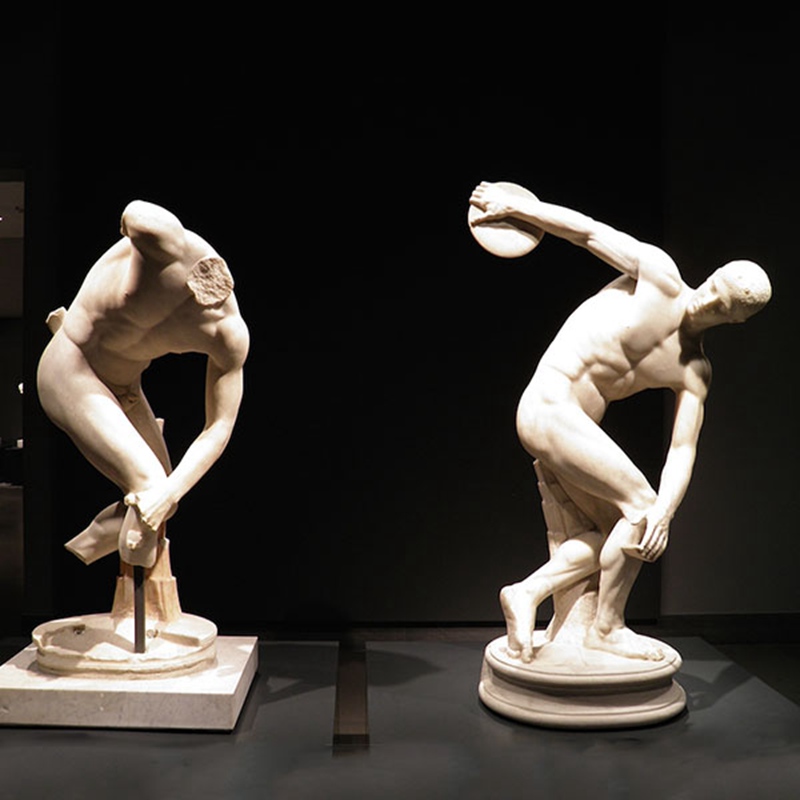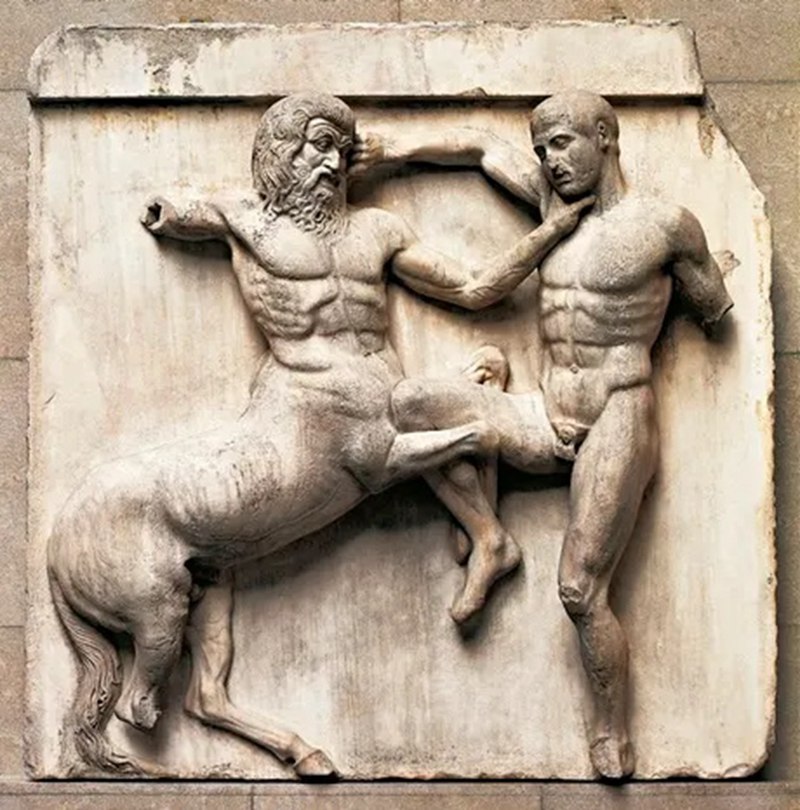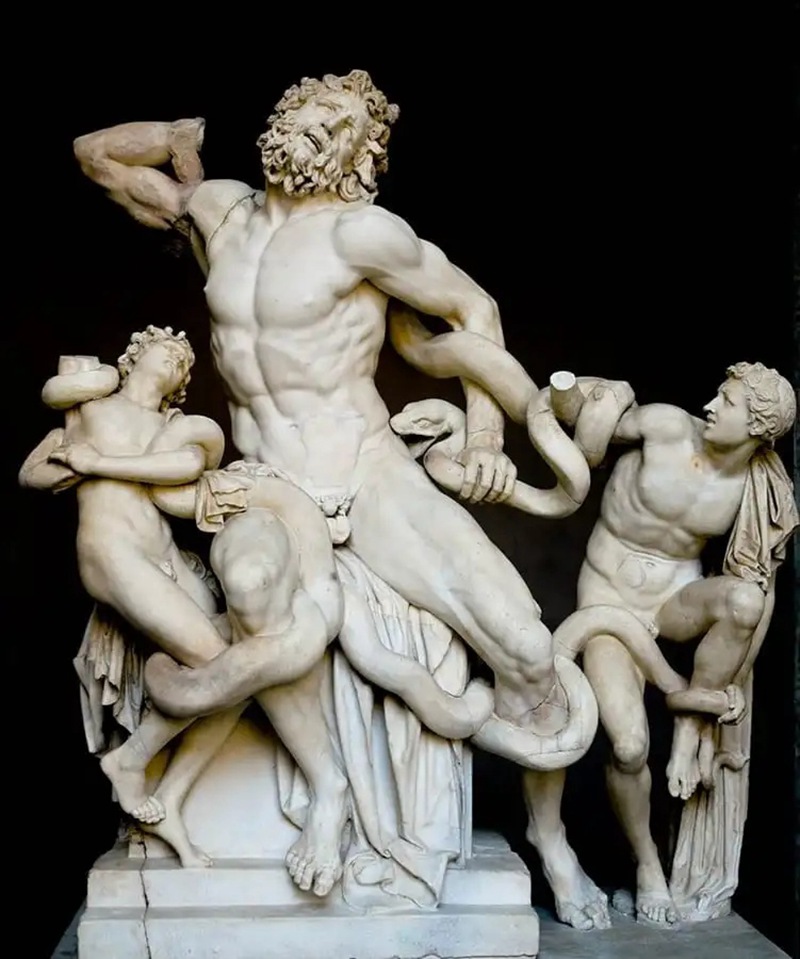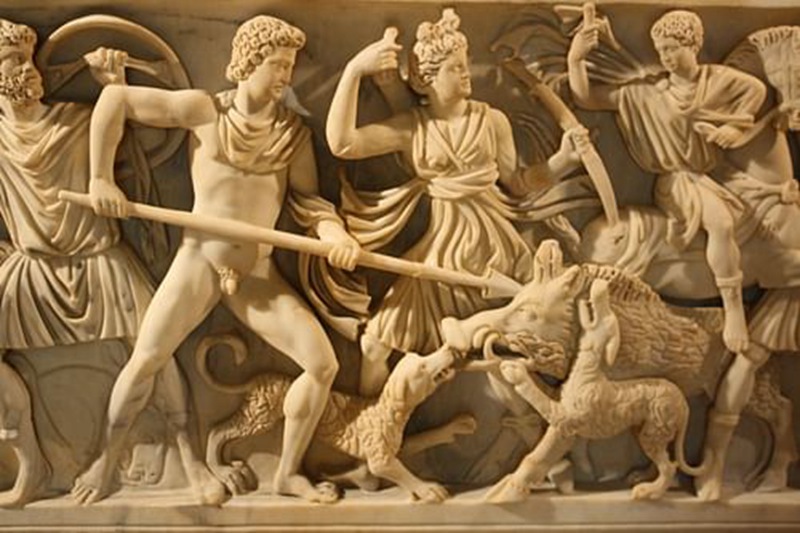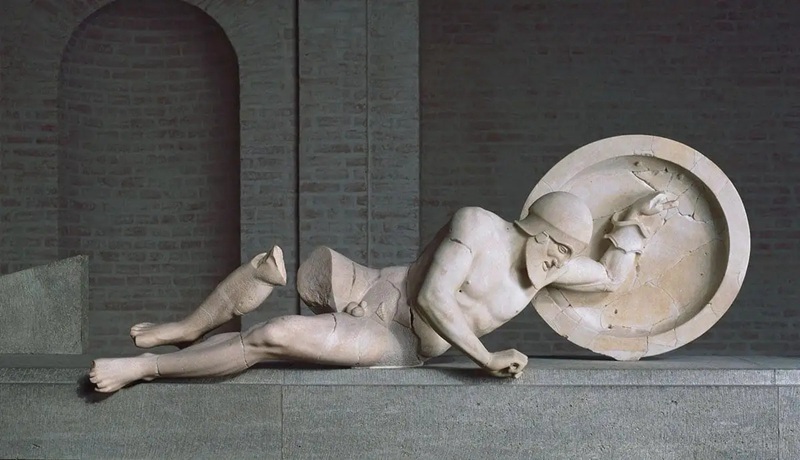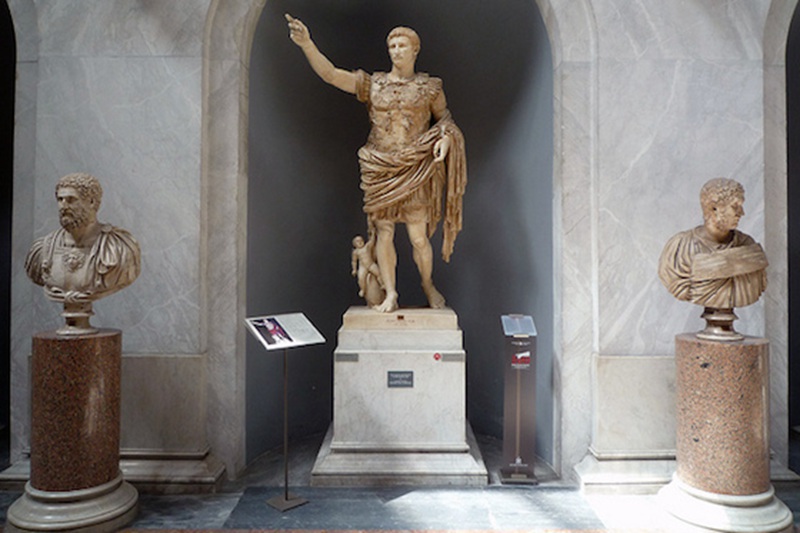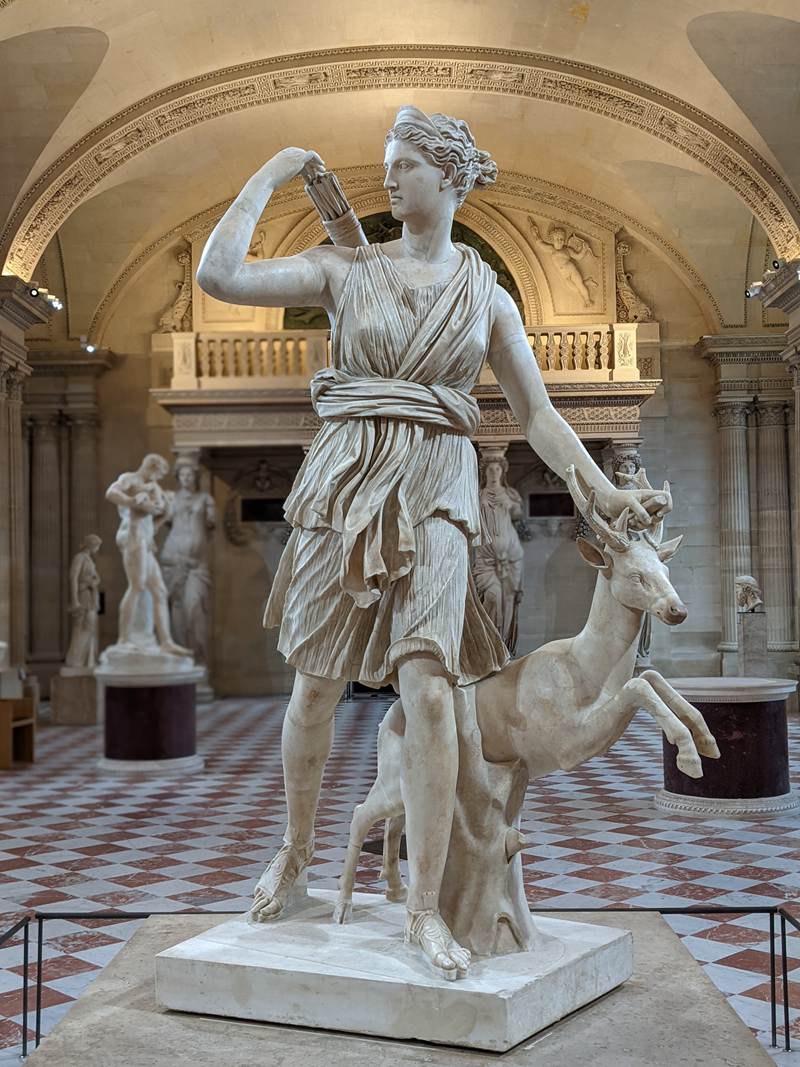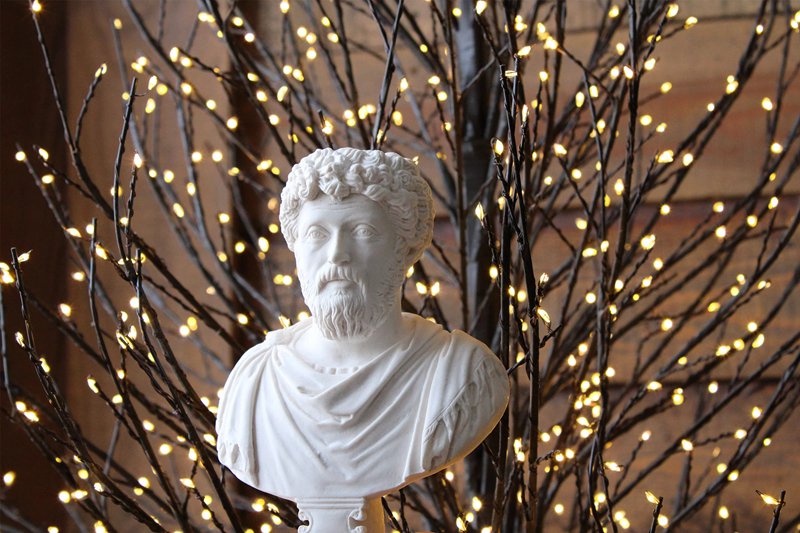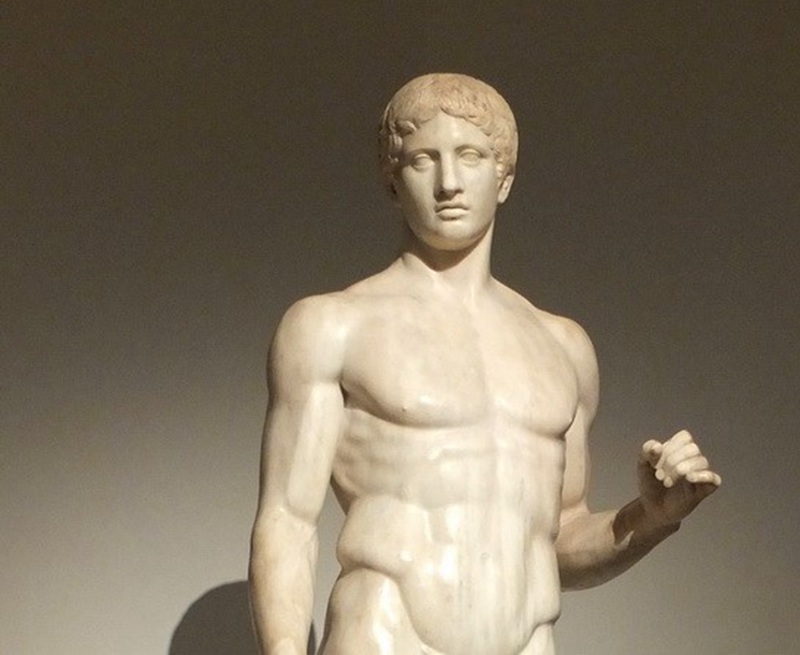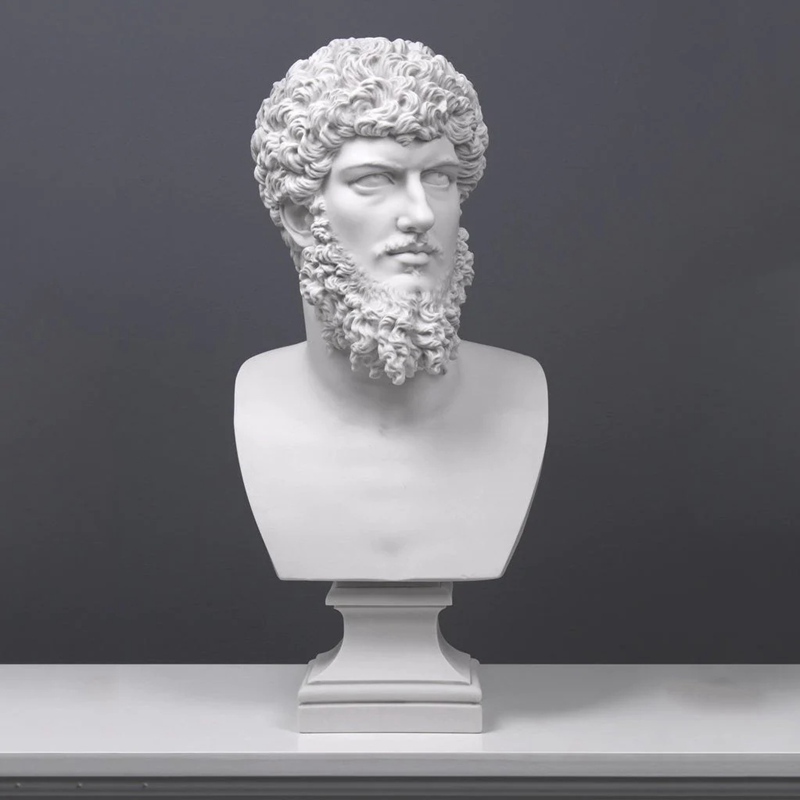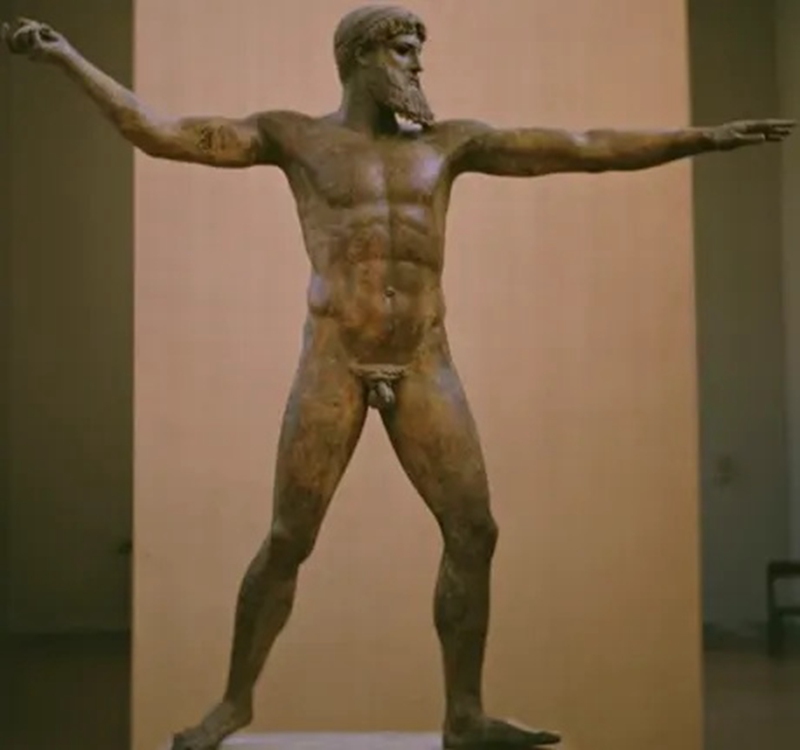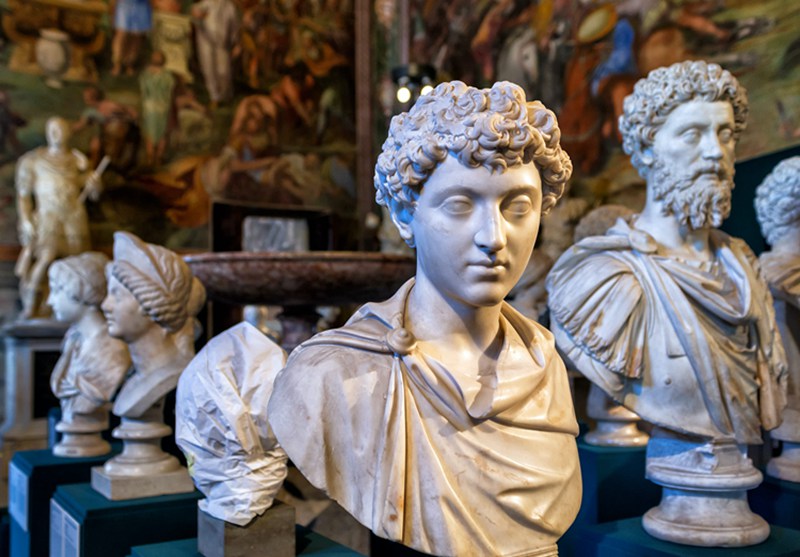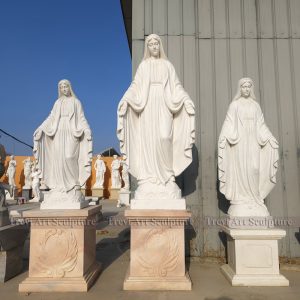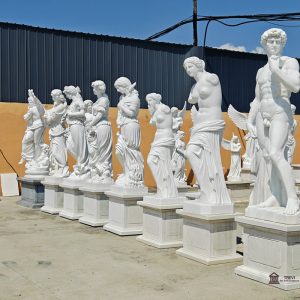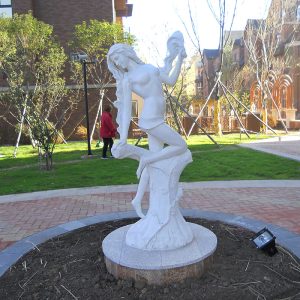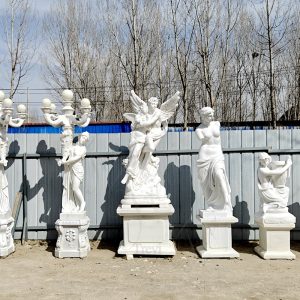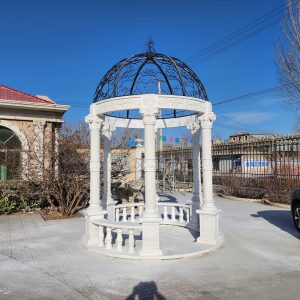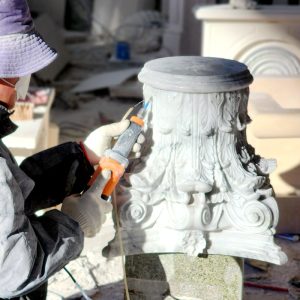Ancient Greek and Roman civilizations were true masters of the art of sculpture. Both cultures left behind an exquisite legacy that continues to captivate the world to this day. While the Greeks and Romans shared certain influences, their sculptures diverged in significant ways, reflecting the distinctive values, aesthetics, and historical contexts of each civilization. In this blog, we will delve into the enchanting world of Greek and Roman sculptures and explore the fascinating differences between these two remarkable artistic traditions.
1. Origins and Influences:
Greek Sculpture:
The roots of ancient Greek sculptures can be traced back to the Archaic period (8th – 5th century BCE). Ancient Greek sculptors drew inspiration from the Egyptians and Near Eastern cultures, adopting certain artistic techniques and stylization. However, as the Greek civilization evolved, their sculptors embraced a newfound naturalism and a focus on the human form, embodying the concept of idealism.
Roman Sculpture:
Ancient Roman sculptures were heavily influenced by the Greeks, and during the Republic era (509 – 27 BCE), many Greek sculptors were brought to Rome to create works for wealthy patrons. The Romans admired the technical skill of Greek sculptors, leading to an influx of Greek-style artworks. However, as Roman power expanded, their sculptures began to incorporate distinctive features and served different purposes compared to their Greek counterparts.
2. Aesthetic Differences:
Greek Sculpture:
Greek sculptures epitomized the pursuit of perfection and ideal beauty. The classical period (5th – 4th century BCE) saw the emergence of harmonious, balanced figures characterized by their emphasis on proportion, grace, and anatomical accuracy. Greek sculptors sought to portray their deities, heroes, and athletes as flawless beings, representing the pinnacle of human potential.
Roman Sculpture:
Roman sculpture, particularly during the Imperial period (1st – 4th century CE), embraced a more realistic and varied approach. While they continued to draw inspiration from Greek art, Roman sculptors were fascinated with capturing individualized and expressive portraits of emperors, politicians, and other influential figures. Unlike the Greeks’ obsession with idealism, Roman sculptures often showcased imperfections and aging, providing a sense of personality and character.
3. Subject Matter and Purpose:
Greek Sculpture:
The themes of Greek sculpture primarily revolved around mythology, religion, and human achievement. Gods and goddesses, mythological creatures, and victorious athletes were common subjects. Temples and public spaces were adorned with grandiose statues that served as religious objects and symbols of civic pride.
Roman Sculpture:
Roman sculptures were highly pragmatic and served diverse functions. Portraits of emperors and prominent individuals were widespread, adorning public spaces and private residences as symbols of power and authority. Funerary monuments and sarcophagi were also prevalent, capturing the deceased in lifelike forms to honor their memory and achievements. Roman art focused on commemorating historical events and individuals rather than abstract ideals.
4. Expression and Emotion:
Greek Sculpture:
Ancient Greek sculpture was known for its serene and composed expressions. The focus on ideal beauty often led to stoic and unchanging facial features, conveying a sense of timelessness and divine calmness. Emotion was generally subtle or subdued, as the Greeks believed that emotions should be restrained and controlled.
Roman Sculpture:
Roman sculptures explored a wider range of emotions and expressions. Portraits of rulers and other influential figures were not only meant to depict their physical likeness but also to capture their personalities and emotions. Emperors were portrayed with stern, authoritative expressions, while other sculptures, such as mourners on funerary monuments, displayed grief and sorrow. The emphasis on individuality extended to emotional portrayals, contributing to the realism and humanism in Roman art.
5. Techniques and Materials:
Greek Sculpture:
Greek sculptors primarily worked with marble, bronze, and terracotta. Their mastery of chiseling and carving allowed them to achieve intricate details and lifelike representations of the human body. The lost-wax technique was employed for bronze sculptures, showcasing their exceptional technical skills.
Roman Sculpture:
Roman sculptors employed a wide range of materials, including marble, bronze, and even ivory. They expanded upon the Greek use of marble by adding colored stones for clothing and accessories, creating a more vibrant and decorative effect. Additionally, Roman sculptors often reused existing sculptures, modifying them to suit their needs, showcasing their practical and resourceful approach.
Greek and Roman sculptures represent the artistic prowess and cultural values of two ancient civilizations that continue to inspire and awe us. The Greek pursuit of ideal beauty and divine perfection contrasts with the Roman inclination towards realism and individuality. While the Greeks influenced Roman art, the Romans crafted their unique sculptural legacy that celebrated power, leadership, and historical achievements. Together, these distinct styles serve as timeless reminders of the rich artistic heritage of the classical world.
